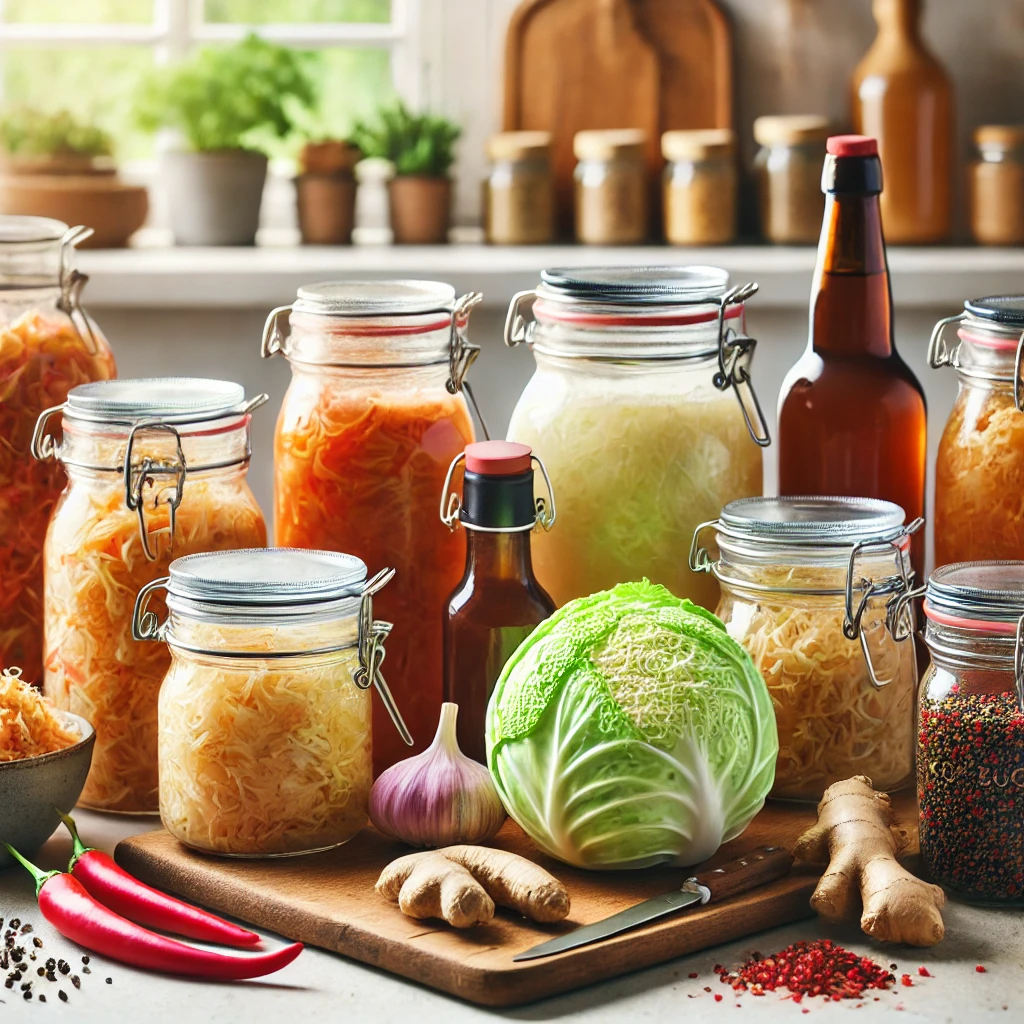Introduction: Fermentation is a fascinating process that transforms ordinary ingredients into flavorful and healthful foods and beverages. This ancient preservation method has been used for centuries to create some of our favorite culinary staples, from sauerkraut to kombucha. In this guide, we’ll explore the basics of fermentation, its health benefits, and how you can start fermenting your own foods at home.
What is Fermentation?
Fermentation is a natural process where microorganisms like bacteria, yeast, and molds convert carbohydrates (such as sugars and starches) into alcohol or acids. This process acts as a preservative and enhances the flavor, texture, and nutritional value of food. There are two primary types of fermentation:
- Lactic Acid Fermentation:
- Used in the production of sauerkraut, kimchi, pickles, and yogurt.
- Lactic acid bacteria convert sugars into lactic acid, creating a tangy flavor.
- Alcohol Fermentation:
- Used in brewing beer, making wine, and fermenting kombucha.
- Yeasts convert sugars into alcohol and carbon dioxide.
Health Benefits of Fermented Foods
Fermented foods offer several health benefits due to their high content of probiotics, which are beneficial bacteria that support gut health. Here are some key benefits:
- Improved Digestion: Probiotics help balance the gut microbiome, aiding in digestion and nutrient absorption.
- Enhanced Immune Function: A healthy gut can boost the immune system and help protect against infections.
- Increased Nutrient Availability: Fermentation can increase the bioavailability of nutrients, making them easier for the body to absorb.
- Reduced Risk of Chronic Diseases: Consuming fermented foods has been linked to a reduced risk of certain chronic diseases, such as heart disease and diabetes.
Fermentation Projects to Try at Home
- Sauerkraut
- Ingredients: 1 head of cabbage, 1-2 tablespoons of sea salt.
- Method: Shred the cabbage, mix with salt, and pack tightly into a jar. Allow it to ferment at room temperature for 1-4 weeks, depending on taste preference.
- Kombucha
- Ingredients: 1 SCOBY (symbiotic culture of bacteria and yeast), 1 cup of sugar, 8 cups of water, 8 black tea bags.
- Method: Brew sweet tea and let it cool. Add the SCOBY and let it ferment for 7-14 days in a warm place. Bottle and flavor if desired, then ferment for an additional 3-7 days for carbonation.
- Kimchi
- Ingredients: Napa cabbage, daikon radish, carrots, green onions, garlic, ginger, Korean chili flakes, fish sauce, and salt.
- Method: Salt the cabbage and let it wilt. Rinse and mix with other ingredients to create a paste. Pack into jars and let ferment for 1-2 weeks.
Safety Tips for Fermenting at Home
- Use Clean Equipment: Ensure all jars, utensils, and surfaces are clean to prevent unwanted bacteria or mold growth.
- Avoid Metal: Use glass or food-grade plastic containers, as metal can react with acids.
- Monitor Fermentation: Check for signs of spoilage, such as off-smells or visible mold.
- Burp Jars: Release gas buildup by opening jars daily, especially during the first few days of fermentation.
Conclusion: Fermentation is a rewarding and creative way to enhance your diet with flavorful and nutritious foods. By understanding the basics and starting with simple projects like sauerkraut and kombucha, you can explore the world of fermentation and enjoy its many health benefits. Happy fermenting!

